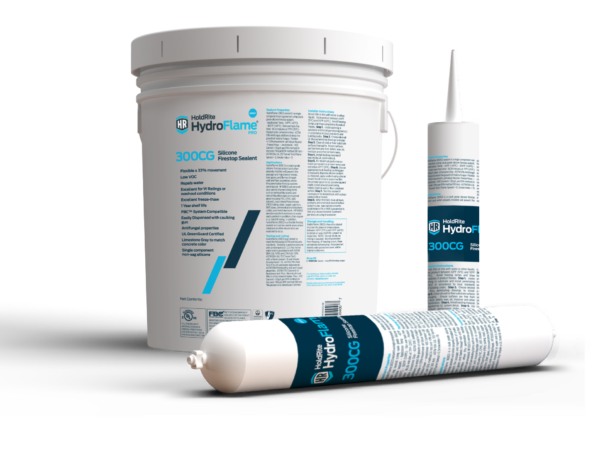With the acquisition of HoldRite in 2017, RWC knew it had gained something special. Well-known and respected for its firestopping solutions, HoldRite continued to lead brand and category growth through product innovation well after the acquisition.
And after the successful introduction of the first iteration of HoldRite firestop sealants in 2019, RWC is now offering an even more robust solution with the launch of the HydroFlame 300 self-leveling (HF300SL) and HydroFlame 300 caulk-grade (HF300CG) silicone firestop sealants.
First launched in June 2020, the HF300SL and HF300CG are moisture-resistant silicone fire sealants designed for areas subjected to high levels of moisture or when UL listed W ratings are required. As quick curing silicone sealants, they can also be used across a variety of pipe types. The self-leveling HF300SL is designed for floor applications, while the HF300CG is a caulk-grade sealant designed for use on both floor and wall penetrations.

“The new iterations of our firestop sealants will provide contractors a solution that is both excellent for W ratings and washout conditions while also developing new efficiencies,” said Jeff Hamilton, firestop product manager at RWC. “HF300SL and HF300CG will simplify installation and create new standards to elevate contractors’ businesses, especially where W-rated sealants are needed.”
RWC pursues supreme quality through each product design. With continued investment in firestopping solutions, the manufacturer is continuing to lead one of the most innovative and transformative segments in the market.
The new silicone sealants are just one part of HoldRite’s proven system of firestopping solutions. Customers have come to understand the value and advantages of using HoldRite’s HydroFlame products for firestopping needs, and when they express the need for additional solutions, RWC listens.
“We are in the field and partner with customers to ensure we hear feedback first-hand. We take those inputs to our team to help inform product improvements and innovation,” Hamilton continued. “By listening to feedback, we are evolving how and what we create to make efforts more efficient and cost effective.”




Join the conversation: